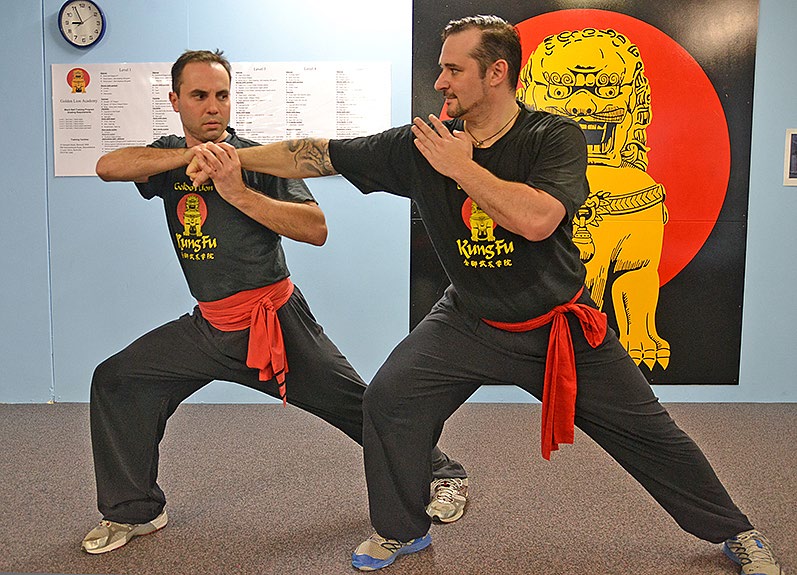Teaches how the control or neutralisation of an opponent in conflict situations can be more appropriate than a direct assault.
On Saturday the 30th of May, The Chin Na Devil Hands Workshop was conducted by Sifu Michael Pringle and Si Jie Josephine Baful at Golden Lion’s Rowville Centre. Approximately thirty students were in attendance to learn about the art of seizing and locking.

For me, the most insightful component of the entire workshop occurred right at the very start. This was Sifu Michael’s expressive introduction and categorisation of Chin Na essence. Although the workshop was mostly comprised of a lot of physical practice of techniques, body movement and applications, it was the introduction that personally set me up for a fantastic afternoon of learning. Therefore, I thought that it would be fitting to emphasise more about that here.
Sifu’s introduction was comprised of a greater overview of Kung Fu practice, and he was able to realistically institute the significance of “options” that should be available to a skilled martial artist. This led to relating how Chin Na, as an origin element of Kung Fu, is still today a vital “ingredient” for a Martial Artist’s options. Sifu detailed how the “control” or “neutralisation” of an opponent in conflict situations will sometimes be more appropriate then a direct assault. This is where the workshop’s Art of Seizing and Locking was substantiated. When pressure points are applied with Chin Na, it is referred to as “Devil Hands”. This is regularly taught at Golden Lion.
I found that there is a lot to consider and apply when attempting to physically neutralise an opponent. Both Yin and Yang techniques need to be employed, and mostly together. This was the difficult part of the workshop for me to absorb. I found that even though Sifu was very explicit about describing how to both resist and yield to an opponent to gain the advantage, I found that I was focusing on either one a lot more than the other. Correctly yielding to an opponent, especially when they are attempting to muscle you around, feels like an unnatural reflex. I was consciously aware of the instruction to be sensitive and calm enough to apply Chin Na by using my opponent’s momentum against them effectively, but being sensitive to aggression, especially in close proximities, is much easier said than done. A lot of “unlearning” natural behaviour and then building confidence is required.
Researching Sifu’s suggestion of “Wu Wei”, I have found that this concept goes a long way to clarify the essence of what he was attempting to impart on us. Wu Wei’s literal meaning is that of “non-action” or “non-doing”. Neutrality is achieved by effortlessness against effort. Being able to be sensitive to an opponent requires their effort to be neutralised by your effortlessness. Yin and Yang are neutral in Chin Na when both strong and soft, or perhaps resist and yield, are in harmony.
Wu Wei concept applied to Kung Fu, results in Chin Na. This made it clearer to me why Sifu was so inspiring with his philosophy of Chin Na in this workshop and how fundamental it is for martial artists to have more “options”.
David Della Gatta, Murrumbeena kung fu Centre.
